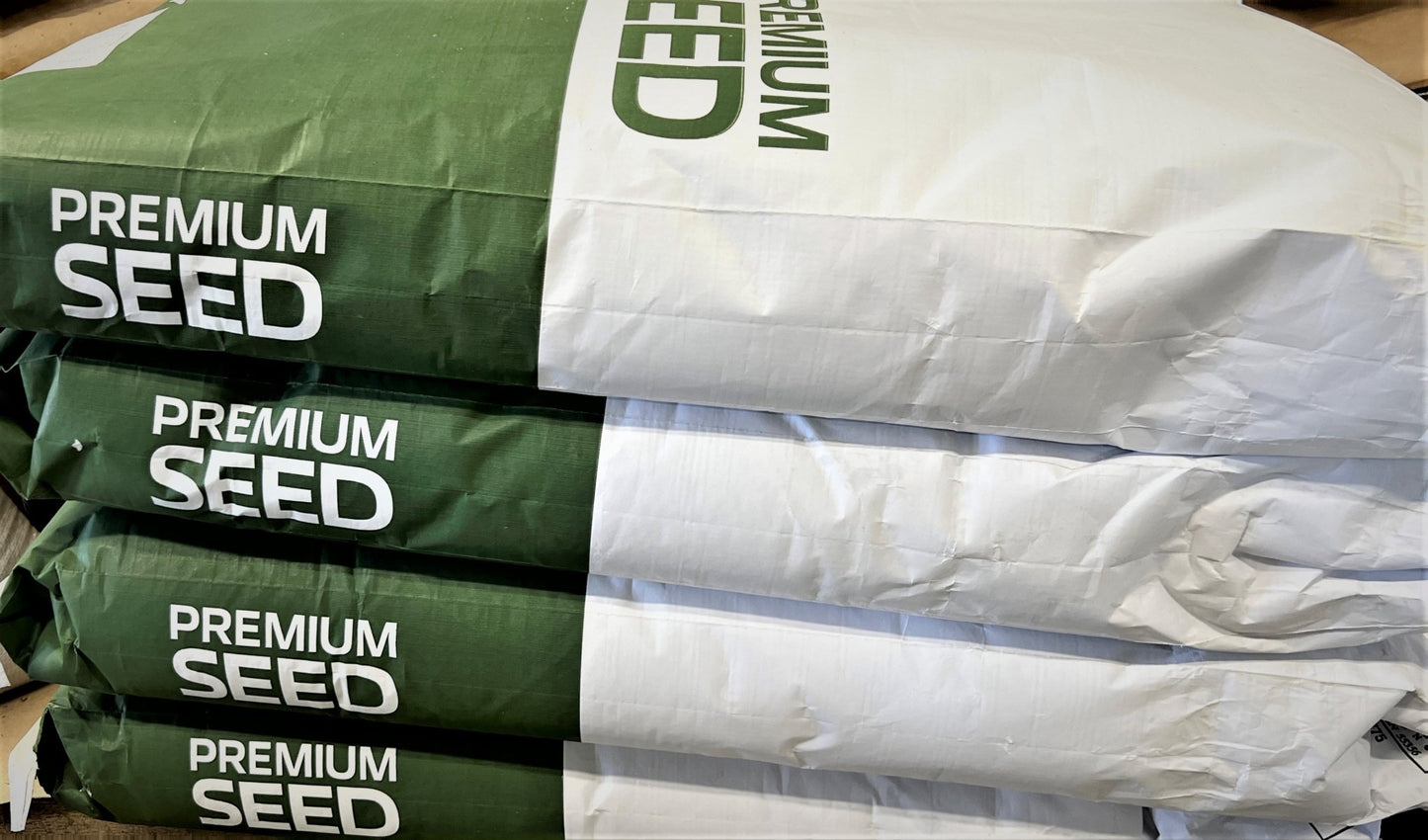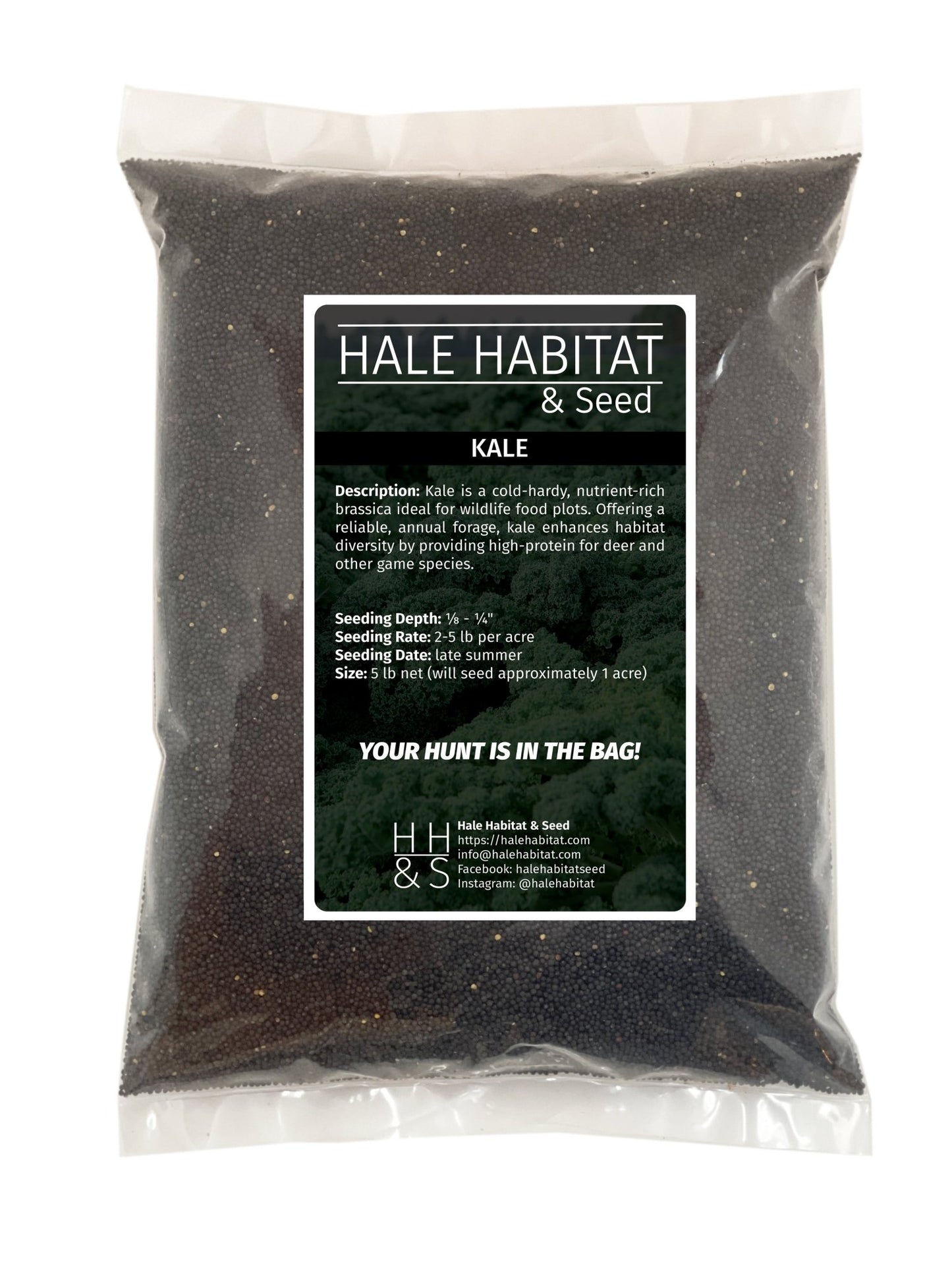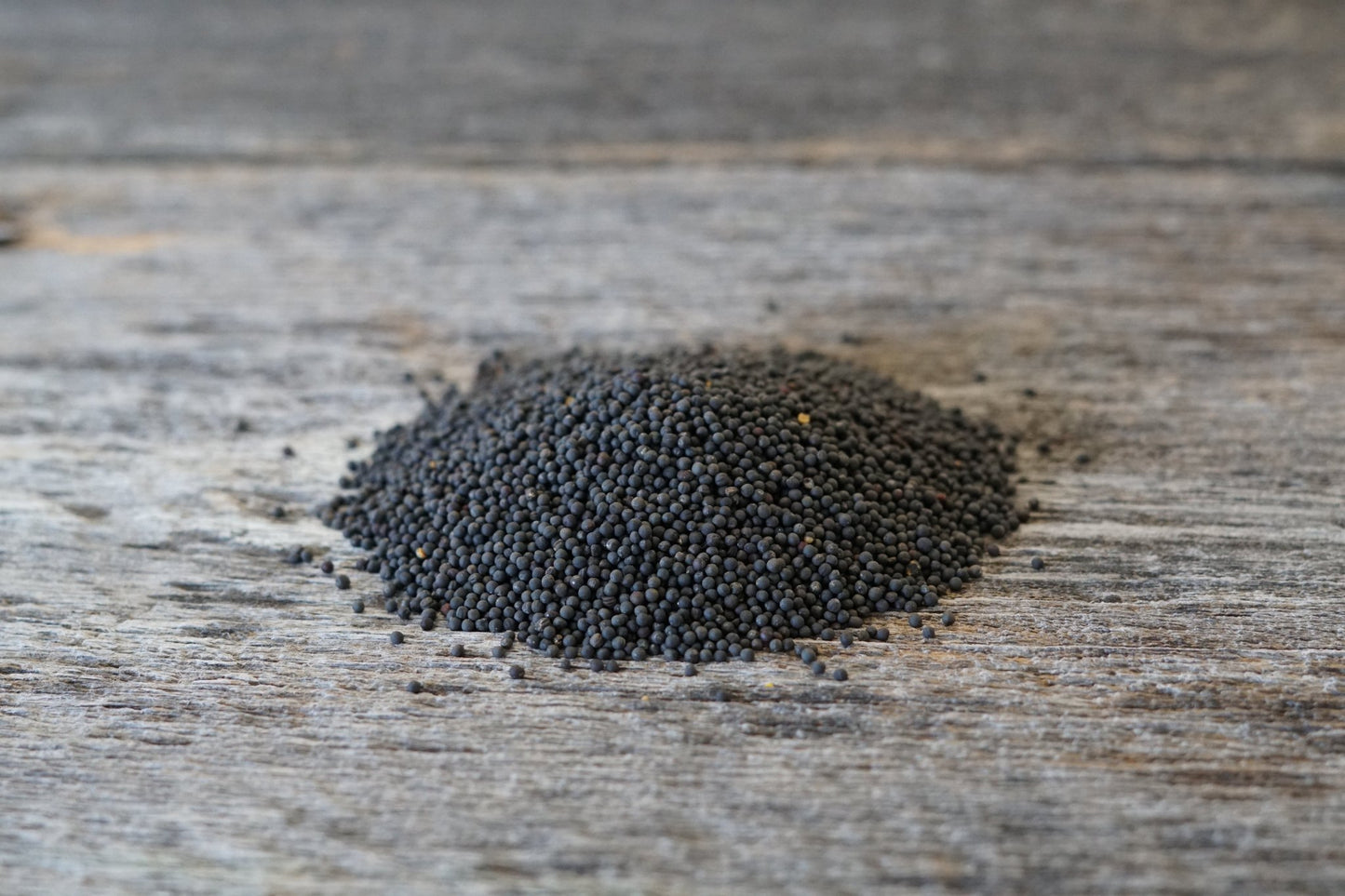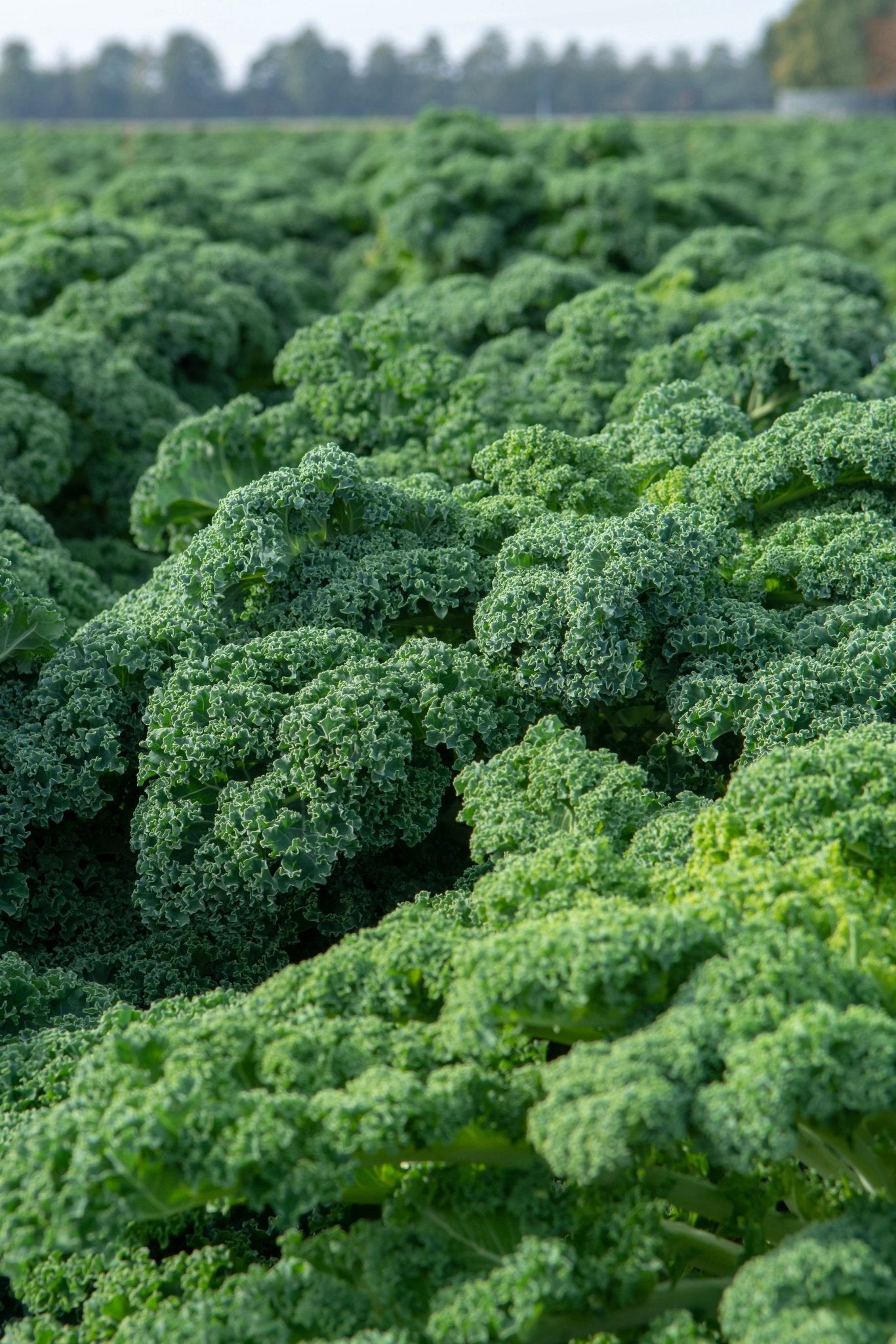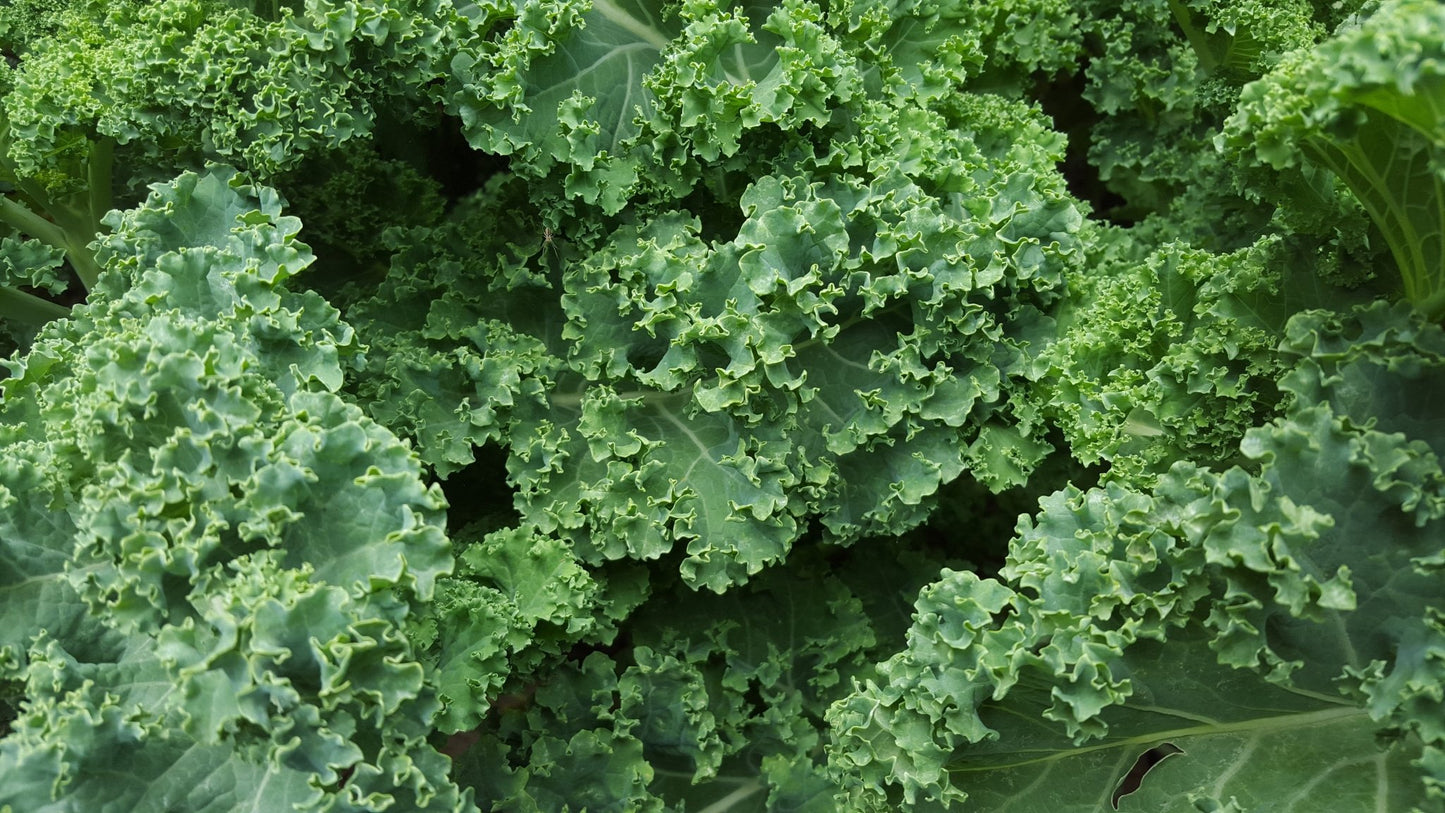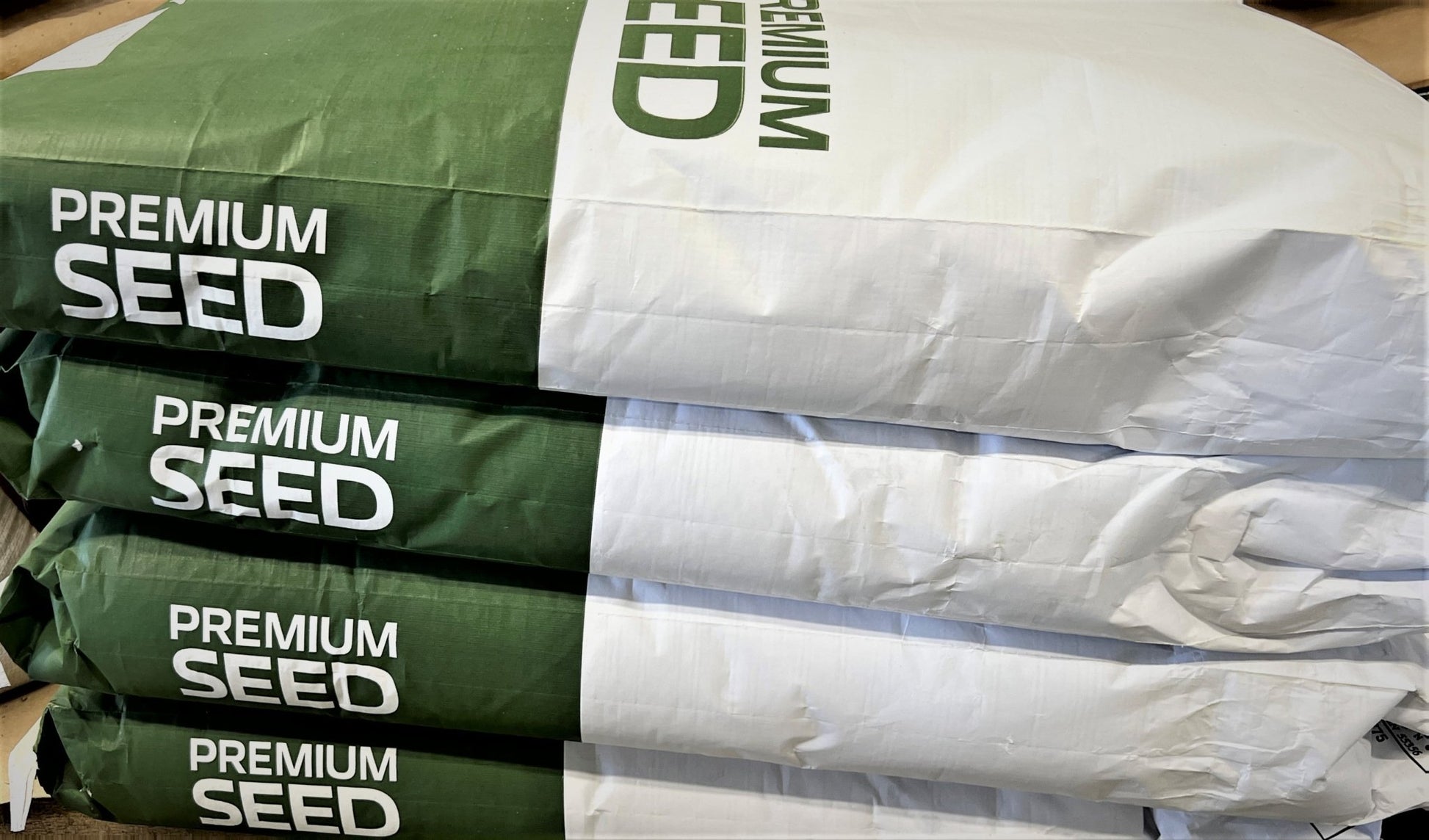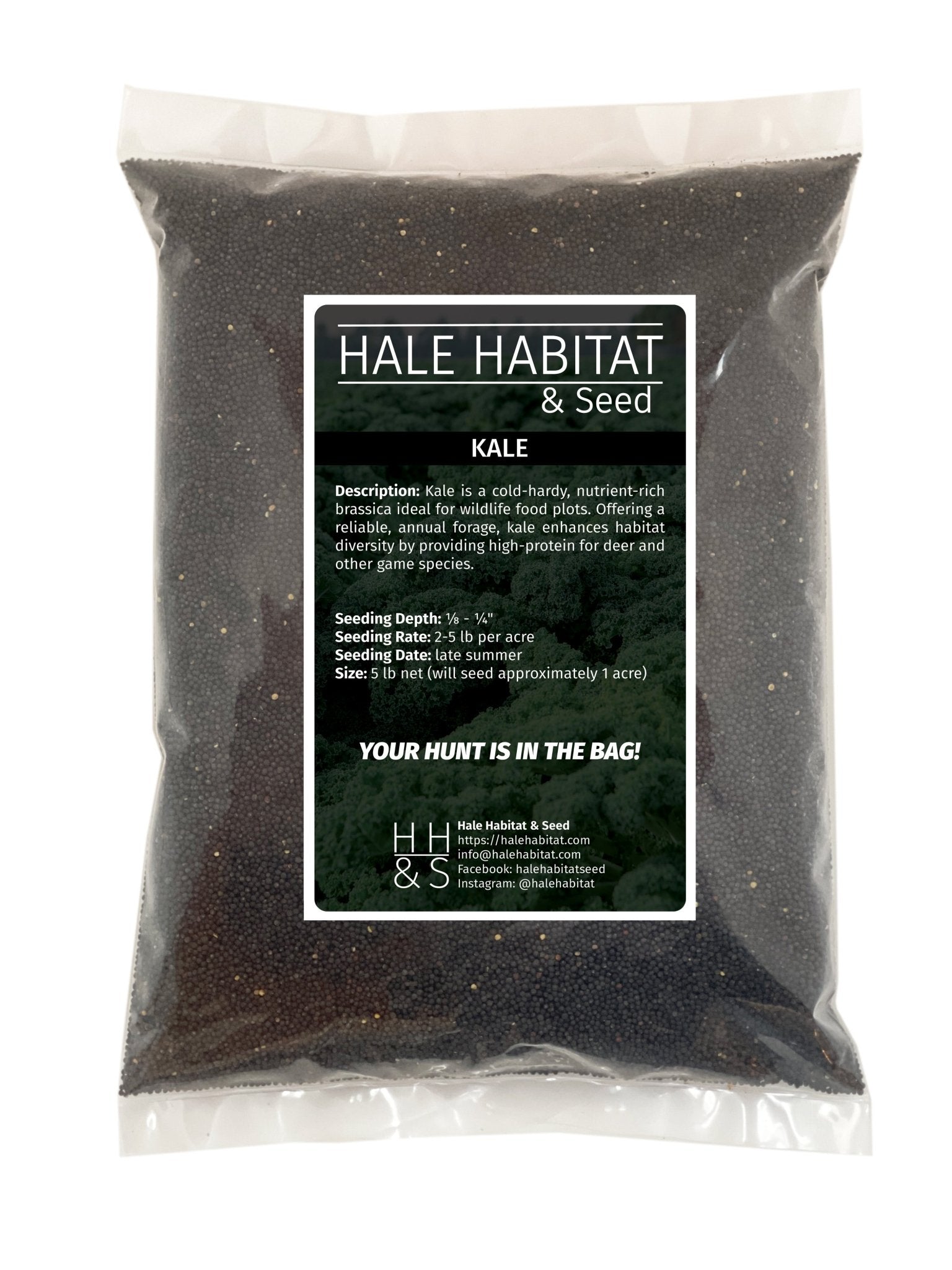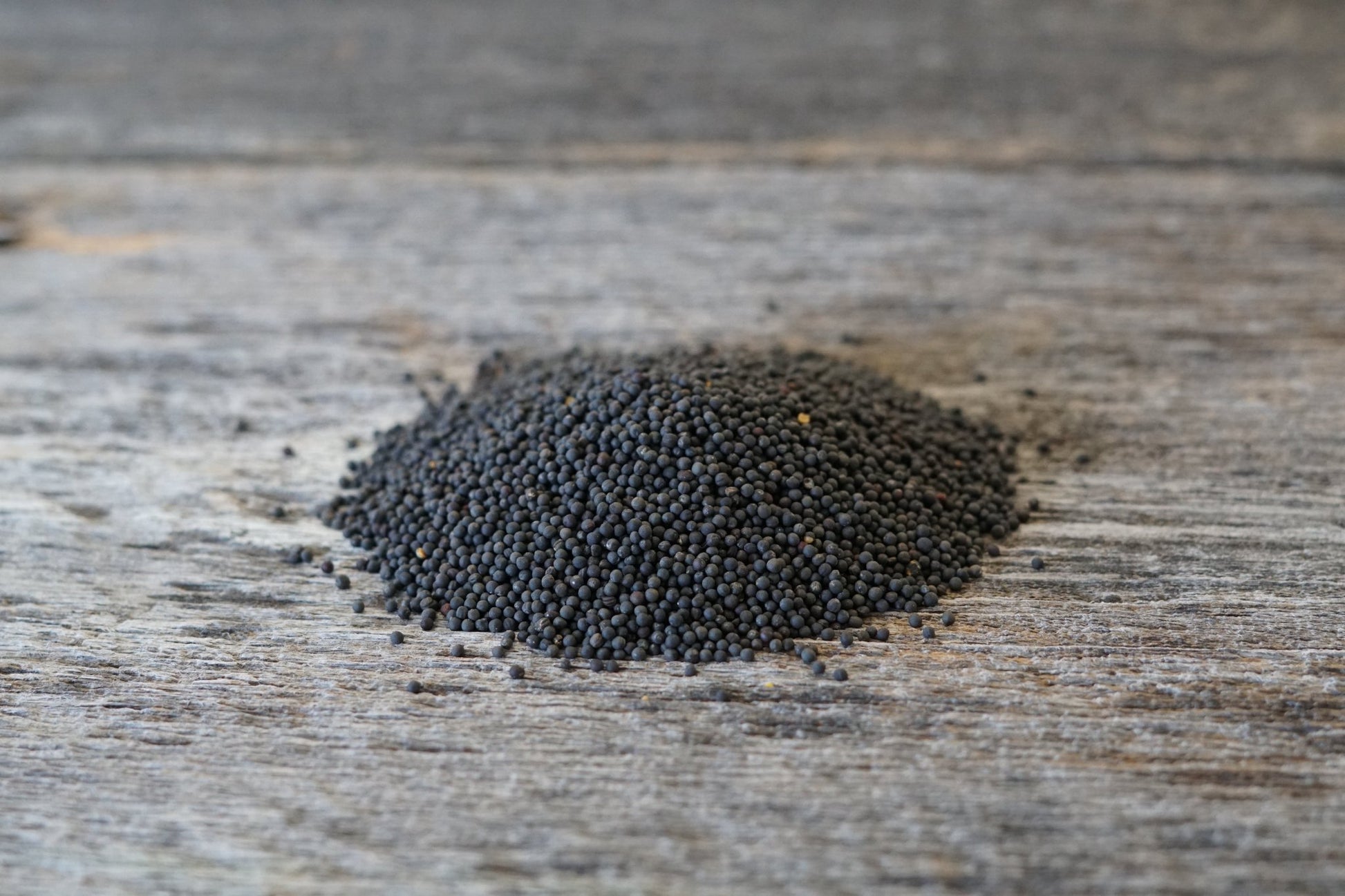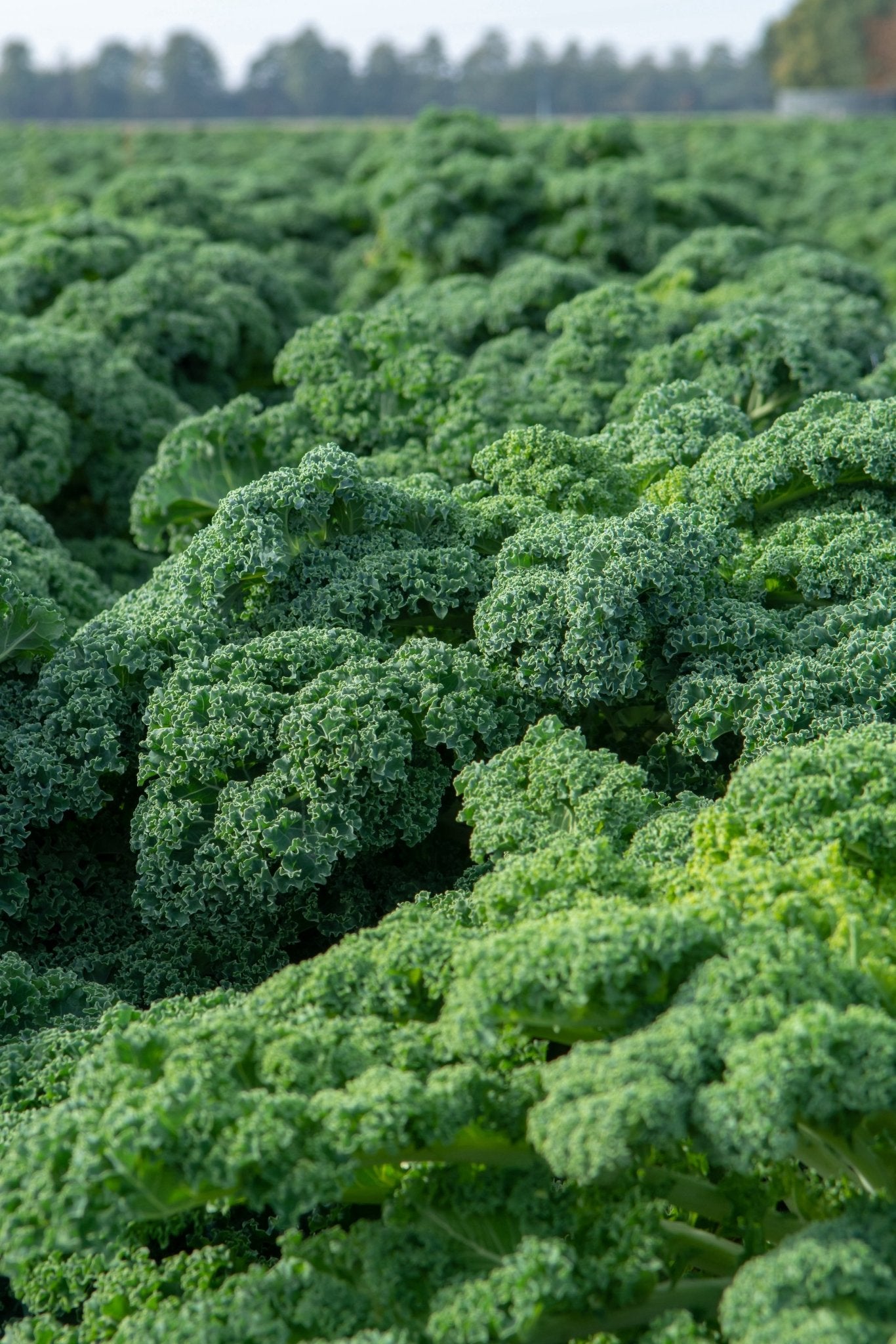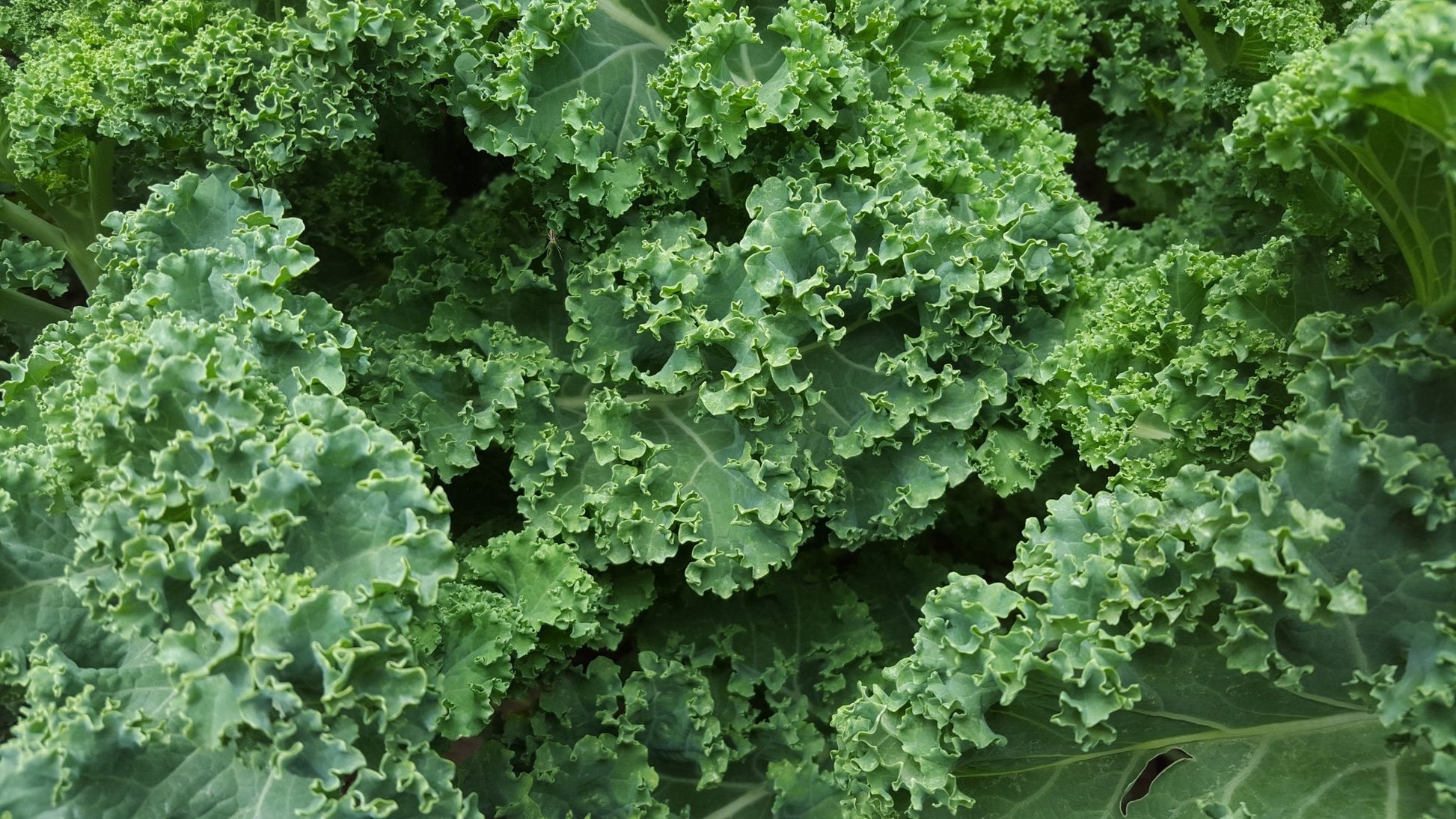Hale Habitat & Seed
Kale
Kale
FREE SHIPPING!
Couldn't load pickup availability
Kale (Brassica oleracea) is a cool-season leafy green that is highly nutritious and popular in human consumption for its vitamin-rich leaves. While traditionally grown for human food, kale also serves as an excellent wildlife food source, especially for deer, rabbits, and small mammals. Its dense, nutrient-rich foliage attracts wildlife and can be used in wildlife food plots or as part of forage mixes.
Benefits for Wildlife Habitat
✔ Leaves are a nutritious food source for wildlife, especially in late fall and winter.
✔ Provides cover for small mammals and insects.
✔ Deer and rabbits feed on kale’s nutritious foliage, particularly in early spring and late fall.
✔ Attracts a variety of insects, which in turn support bird populations.
Planting Guidelines for Kale
-
Planting Times:
- Early Spring (March–April) or Late Summer (August–September): Kale grows best when planted in cooler temperatures, typically between 50–70°F. Planting in these seasons helps avoid summer heat stress and encourages rapid growth.
-
Seeding Depth:
- ¼ to ½ inch deep to ensure proper seed-to-soil contact. Kale seeds are small and should not be planted too deep to avoid delayed or poor germination.
-
Seeding Rates:
- Drilled: 5–7 lbs per acre for a more uniform, well-spaced planting.
- Broadcast: 8–10 lbs per acre, followed by light harrowing or cultipacking for good seed-to-soil contact.
-
Days to Maturity:
- Kale typically reaches 60–90 days to full maturity, depending on the variety and growing conditions. However, leaves are edible earlier and can be harvested as baby greens.
-
Drought Tolerance:
- Moderate – Kale can tolerate some drought but prefers consistent moisture for optimal growth. Drought conditions may reduce leaf production and quality.
-
Saturated Soil Tolerance:
- Low to Moderate – Kale prefers well-drained soils. Prolonged wet or waterlogged soils can promote root rot and disease.
-
Shade Tolerance:
- Moderate – Kale can grow in partially shaded areas, but it thrives best in full sun or light shade, which encourages optimal leaf production.
Fertilization Guidelines for Kale
-
Soil pH: Kale prefers slightly acidic to neutral soils, with an ideal pH range of 6.0–7.0. Soils should be well-draining for optimal growth.
-
Nitrogen (N):
- Kale is a heavy feeder, particularly in its early growth stages. Apply 60–80 lbs per acre of nitrogen in early spring for vigorous leaf production. Additional nitrogen may be needed if soil tests show deficiencies.
-
Phosphorus (P):
- Kale requires moderate amounts of phosphorus to support root development and overall plant health. Apply 20–40 lbs P₂O₅ per acre if soil tests show low phosphorus levels.
-
Potassium (K):
- Apply 40–60 lbs K₂O per acre for healthy growth and to increase resistance to diseases and environmental stress.
Fertilization Timing:
- Apply nitrogen, phosphorus, and potassium before planting or at planting time.
- Side-dress with additional nitrogen during the growing season, particularly if the plants show signs of yellowing or slow growth.
Herbicide Use for Kale
-
Weed Management:
- Kale, like many leafy greens, is susceptible to weed competition, especially during early stages of growth. Weeds can outcompete young kale plants for light, water, and nutrients, reducing yields and quality.
-
Herbicide Options:
- Pre-emergence: Use Pendimethalin (Prowl) or Trifluralin to control grassy and broadleaf weeds before planting. These herbicides help prevent weed growth without harming established kale plants.
- Post-emergence: Use Clecora or 2,4-D for broadleaf weed control after kale has emerged. However, be careful with post-emergence herbicides to avoid damage to the crop.
Key Considerations:
- Kale is generally sensitive to herbicides, especially during early growth stages.
- Consider organic or mechanical weed control methods, such as hand-weeding, mulching, or cultivating to reduce the need for herbicides, especially in organic or sustainable growing practices.
Share
